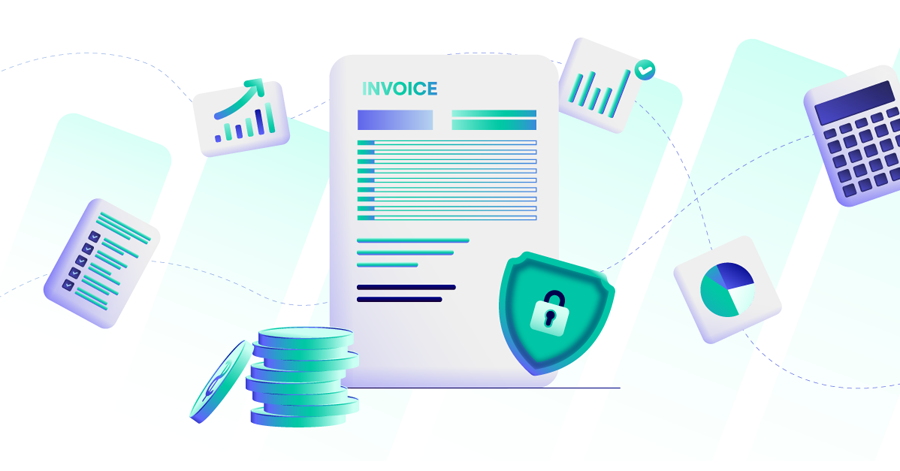Written by Bill Noel, Chief Product Officer, Solifi, and Rosanne Doyle, Product Manager Asset-Based Lending & Factoring
With the factoring finance market valued at $3,271 billion in 2021 and estimated to grow by 79% to $5,872 billion by 2031, there is no doubt that this sector represents a solid rock within the wider working capital industry.
Dating back to the Middle Ages, factoring began when merchants and traders used accounts receivable as collateral for loans. It was not until the 18th century that textile merchants introduced accounts receivable as a means to generate cash flow.
With time, this practice gained widespread adoption, and in the 20th century, commercial companies began specializing in the purchase of accounts receivables.
The global factoring industry continued to grow and expand through the centuries, with no signs of slowing down.
So why has factoring successfully navigated so many economic waves over the centuries?
Factoring has become a trusted and essential practice across many industries. Where other sectors face challenges during taxing economic downturns, factoring allows companies to seize the opportunities that market instability can offer. When banks are less likely or willing to take on risky accounts, this opens the door for other lenders, factors, and ABL specialists, who understand the value that can be extracted from lending against accounts receivable and inventory. They are experts in managing risk and providing maximum liquidity to the borrower.
From a customer’s perspective, banks have been tightening their underwriting conditions, rates are rising, the cost of money is high, and the threat of a recession is looming, meaning that factoring remains an accessible and affordable option for customers who do not qualify for traditional finance products.
If banks are steering away from riskier business, why do factors embrace it?
Factors use their own internal evaluation processes and metrics to determine if a business meets the criteria for financing and ultimately make the decision based on the value of the receivables rather than the creditworthiness of the business. As a result, factors can lend money in situations where a traditional lender would not. Even so, factors must still be concerned with minimizing their risk.
At the core of this operation should be a reliable platform, like Solifi Factoring, which streamlines the factor’s processes, enabling efficient vendor management, multi-data-point import, and workflow automation.
Solifi Factoring is built on the Solifi Open Finance Platform, which provides a highly scalable, secure, and robust foundation for all Solifi SaaS services. Highly configurable and rich in features, Solifi Factoring can be implemented in as little as six weeks, allowing factors to welcome a return on their investment early on in the process and use the configurable automation within the software to maximize their business operations. In addition, the use of APIs allows applications to share data by connecting disparate systems to enable real-time meaningful insight gathering.
What’s at the heart of the success of factoring finance?
Historically, factoring referred to invoice financing, which includes accounts receivables. Over the years, the emergence and increased use of inventory factoring has surfaced. Inventory factoring refers to the ability of the factor to generate revenue by acquiring inventories and reselling them.
The expansion of ‘traditional’ factoring to include inventory factoring has resulted in an opportunity for customers to diversify their portfolios, thus minimizing risk and increasing growth.
In addition, inventory factoring allows lenders to strengthen their relationship with their customers by affording them the ability to finance different types of collateral. In an unpredictable economic climate, factors can further reinforce this relationship, becoming true partners with their customers.
Whether it is leasing, dealer finance, or wholesale finance, an experienced asset finance partner like Solifi is the game changer for factors, as they can tap into a wealth of knowledge and expertise, which allows factors to capitalize on their processes and offer financing with no additional software purchases, additional modules or cost.
So what’s the catch?
Like all financial products, factoring is exposed to the same risks triggered by fraudulent activity. As factors operate in precarious situations, it is crucially important that they remain vigilant and can quickly identify threats that could minimize their profits and add increased risk.
The most dangerous type of fraud is not the isolated large-scale big-values but rather the frequent, small-value incidents that often go unnoticed, allowing the often desperate borrower to accumulate significant fraud value levels over time.
Customers may not always make the right decision when under financial stress. Therefore, proven software such as Solifi Factoring can significantly reduce risk and improve the factor’s ability to track customer behavior by analyzing and providing real-time insights to help determine whether a particular instance or behavior is a concerning trend or just a poorly made decision.
This is where modern factoring software plays a vital role in helping factors navigate risk efficiently. Automation and data analysis can detect new suspicious activity in account receivables in real-time, enabling factors to act upon fraudulent invoices, verification discrepancies, and payment fraud.
A trusted factoring software solution allows factors to remain in control and manage their risk efficiently by establishing various criteria, leveraging the system to calculate and approve or reject transactions automatically, generating comprehensive and customized reporting, and receiving real-time notifications and alerts. APIs can manage multiple data sources to give the factors a holistic overview, ensuring that the overall risk is within acceptable levels.
In conclusion, factoring will continue to be a growth area in 2023 and beyond, which will see customers looking to factoring as a way to provide needed cash and liquidity in their organizations.
It is vital that factors seize this market opportunity. This can be supported through a secure and scalable software solution that improves process efficiency and manages and minimizes portfolio risk.
